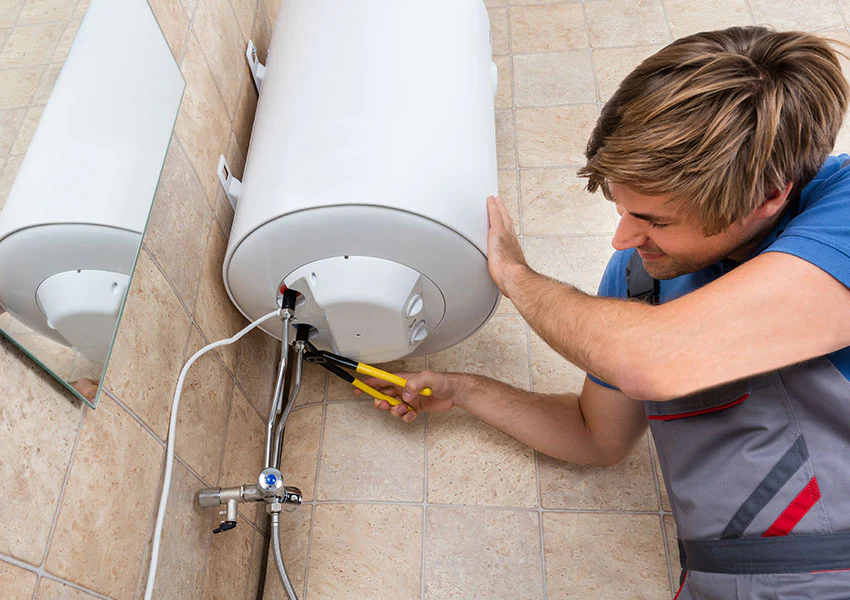Key Maintenance Techniques for Your Home's Hot Water System
Key Maintenance Techniques for Your Home's Hot Water System
Blog Article
Everyone is bound to have his or her own opinion in relation to Tips on Maintaining a Water Heater.

Hot water is crucial for day-to-day convenience, whether it's for a refreshing shower or washing meals. To guarantee your hot water system runs effectively and lasts longer, routine upkeep is key. This article offers sensible pointers and understandings on how to maintain your home's warm water system to stay clear of disruptions and costly repair services.
Intro
Keeping your home's warm water system might seem difficult, however with a couple of straightforward actions, you can ensure it operates smoothly for many years ahead. This overview covers every little thing from understanding your hot water system to DIY maintenance ideas and recognizing when to employ specialist aid.
Importance of Maintaining Your Hot Water System
Regular maintenance not only prolongs the life expectancy of your hot water system but likewise guarantees it runs effectively. Ignoring maintenance can result in decreased efficiency, higher energy bills, and even premature failure of the system.
Signs Your Hot Water System Needs Maintenance
Knowing when your warm water system requires focus can protect against significant concerns. Keep an eye out for indicators such as irregular water temperature level, unusual sounds from the heating system, or rustic water.
Understanding Your Hot Water System
Prior to diving right into upkeep tasks, it's useful to recognize the standard parts of your warm water system. Usually, this includes the water heater itself, pipes, anode poles, and temperature level controls.
Month-to-month Maintenance Tasks
Regular month-to-month checks can assist catch minor concerns prior to they intensify.
Flushing the Hot Water Heater
Purging your water heater removes debris build-up, enhancing effectiveness and prolonging its life.
Monitoring and Changing Anode Rods
Anode rods prevent corrosion inside the container. Checking and changing them when broken is vital.
Inspecting and Changing Temperature Setups
Changing the temperature setups makes sure optimal performance and safety and security.
DIY Tips for Maintenance
You can execute a number of maintenance jobs yourself to maintain your warm water system in top problem.
Checking for Leaks
Consistently examine pipelines and connections for leaks, as these can cause water damage and greater bills.
Examining Pressure Alleviation Valves
Checking the stress relief valve guarantees it works correctly and stops too much stress buildup.
Protecting Pipes
Shielding hot water pipelines decreases warm loss and can conserve power.
When to Call a Professional
While do it yourself upkeep is useful, some issues call for expert knowledge.
Facility Issues Calling For Professional Aid
Examples consist of significant leaks, electric issues, or if your water heater is regularly underperforming.
Regular Specialist Maintenance Conveniences
Specialist maintenance can consist of comprehensive evaluations, tune-ups, and making sure conformity with safety criteria.
Conclusion
Routine upkeep of your home's warm water system is essential for effectiveness, long life, and cost savings. By complying with these ideas and knowing when to seek expert aid, you can ensure a trustworthy supply of warm water without unexpected interruptions.
How to Maintain an Instant Hot Water Heater
Before tinkering with your hot water heater, make sure that it’s not powered on. You also have to turn off the main circuit breaker and shut off the main gas line to prevent accidents. Also turn off the water valves connected to your unit to prevent water from flowing into and out of the appliance. 2. When you’re done, you have to detach the purge valves’ caps. These look like the letter “T†and are situated on either side of the water valves. Doing so will release any pressure that has accumulated inside the valves while at the same time avoid hot water from shooting out and burning your skin. 3. When the purge valves’ caps are removed, you have to connect your hosing lines to the valves. Your unit should have come with three hoses but if it didn’t, you can purchase these things from any hardware or home repair shops. You can also get them from retail stores that sell water heating systems. Read the user’s manual and follow it to complete this task properly. When the hosing lines are connected, open the purge port’s valves. 4. You should never use harsh chemical cleaners or solutions when cleaning your unit. Make use of white vinegar instead. It should be undiluted and you’ll probably use about 2 gallons. 5. Now flush your water heater. This task should probably take about 40 minutes. We can’t give you specific directions for this because the procedure is carried out depending on the type, model and brand of your heater. With that being said, refer to the user’s manual. 6. When you’re done draining the unit, you have to turn off the purge port valves again. Remove the hosing lines that you earlier installed on each of the water valves. Put the valve caps (purge port) back in their respective places and be very careful so as not to damage the rubber discs that are found inside these caps. 7. Now that everything’s back in place, check your user’s manual again to find out how to reactivate your water heating system. 8. Once it is working, turn one of your hot water faucets on just to let air pass through the heater’s water supply pipes. Leave the tap on until water flows smoothly out of it. https://www.orrplumbing.com/blog/2014/september/how-to-maintain-an-instant-hot-water-heater/

I came across that page on What Kind of Maintenance Do Water Heaters Need? while doing a search on the web. Are you aware of somebody else who is occupied with the niche? Be sure share it. We truly appreciate reading our article about Tips For Maintaining Your Hot Water Heater.
Click Here Report this page